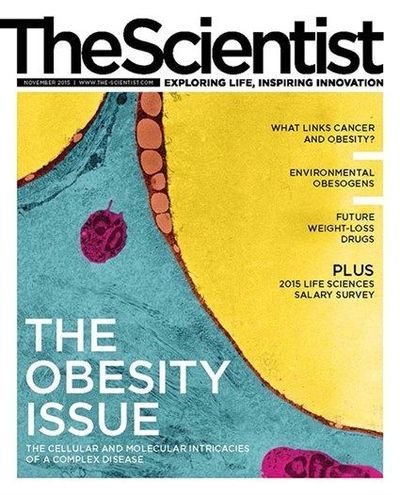 CALF CROSS-SECTIONS: Fatty regions of human leg muscle, outlined in red, differ between lean (left) and obese (right) subjects. HADI RAHEMI, SIMON FRASER UNIVERSITY/MANCHESTER METROPOLITAN UNIVERSITY
CALF CROSS-SECTIONS: Fatty regions of human leg muscle, outlined in red, differ between lean (left) and obese (right) subjects. HADI RAHEMI, SIMON FRASER UNIVERSITY/MANCHESTER METROPOLITAN UNIVERSITY
EDITOR'S CHOICE IN PHYSIOLOGY
The paper
H. Rahemi et al., “The effect of intramuscular fat on skeletal muscle mechanics: Implications for the elderly and obese,” J R Soc Interface, 12:20150365, 2015.
Adipose accumulation
Human muscle is normally around 1.5 percent fat, but can reach up to 11 percent adiposity among the elderly and more than 5 percent in people with obesity, a condition tied to muscle weakness. To figure out how fat affects muscle performance, Hadi Rahemi of Simon Fraser University in British Columbia, Canada, developed an in silico model of a human calf muscle.
Fat’s effects
Working in collaboration with his advisor, James Wakeling, and with mathematician Nilima Nigam, Rahemi confirmed that increased fat impaired muscle performance by stiffening the tissue.
Exceeding...
Because researchers don’t yet understand precisely how fat is distributed throughout human muscles, “the models we’ve got at the moment are conceptual,” says Wakeling. Working to create more-lifelike simulations using human MRI data is their next step.
Interested in reading more?



